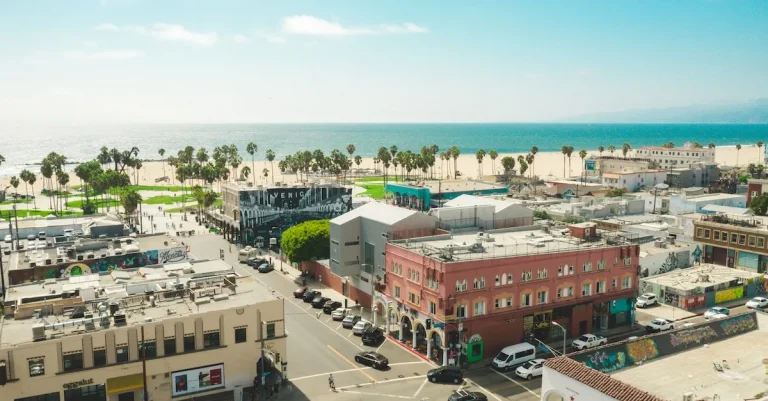Is Rhode Island In Massachusetts? A Detailed Explanation
Rhode Island’s geographic location often leads to some confusion – is it part of Massachusetts or not? This question comes up frequently, especially among those not as familiar with New England geography. The short answer is no, Rhode Island is not part of Massachusetts. But there’s more to the story, which we’ll explore in detail below.
If you’re short on time, here’s a quick answer to your question: Rhode Island is an independent U.S. state and not part of Massachusetts. However, the two states have close historical, economic and cultural connections.
The Origins and History of Rhode Island
Rhode Island, often confused with being a part of Massachusetts, has a rich and unique history that sets it apart from its neighboring state. Let’s delve into the origins of Rhode Island and how it became an independent colony.
Rhode Island was founded as an independent colony
In 1636, a young clergyman named Roger Williams, who was expelled from the Massachusetts Bay Colony due to his religious beliefs, established the settlement of Providence. This marked the beginning of Rhode Island as an independent colony.
Williams believed in the separation of church and state and welcomed individuals seeking religious freedom.
The establishment of Providence led to the formation of other settlements in the region, including Newport and Warwick. These colonies collectively became known as the Colony of Rhode Island and Providence Plantations.
The Colony of Rhode Island and Providence Plantations
The Colony of Rhode Island and Providence Plantations thrived under the principles of religious tolerance and individual freedom. It became a safe haven for those seeking refuge from religious persecution and attracted settlers from various backgrounds and beliefs.
Rhode Island’s economy flourished through trade, shipbuilding, and agriculture. Its ports became vital hubs for commerce, connecting the New England colonies with the rest of the world.
Rhode Island declared statehood apart from Massachusetts
Despite its close proximity to Massachusetts, Rhode Island maintained its independence and distinct identity. In 1776, Rhode Island became the first of the thirteen colonies to formally declare independence from Britain, a full two months before the signing of the Declaration of Independence.
After gaining independence, Rhode Island continued to assert its autonomy. It held a unique stance during the formation of the United States Constitution, as it was the only state not to send delegates to the Constitutional Convention.
However, Rhode Island eventually ratified the Constitution and became the 13th state to join the Union on May 29, 1790.
Today, Rhode Island remains a separate and vibrant state, with its own distinct culture, history, and identity. It is important to recognize its individuality and not confuse it with being a part of Massachusetts.
For more information on the history of Rhode Island, you can visit the official website of the Rhode Island Historical Society at www.rihs.org.
Geographical Location and Borders of Rhode Island
Rhode Island is the smallest U.S. state
Rhode Island holds the distinction of being the smallest state in the United States. With a total land area of just 1,034 square miles, it may come as a surprise that such a small state can have its own unique identity and borders.
Despite its size, Rhode Island has a rich history and a vibrant culture that sets it apart from other states.
It shares a border with Massachusetts but is distinct
While Rhode Island does share a border with Massachusetts, it is important to note that it is a separate state in its own right. The border between Rhode Island and Massachusetts is purely geographical and does not mean that Rhode Island is a part of Massachusetts.
The two states have their own governments, laws, and identities.
The Narragansett Bay separates it from the mainland
Rhode Island is unique in that it is partially separated from the mainland by the beautiful Narragansett Bay. This bay serves as a natural border between Rhode Island and the rest of the New England region.
The bay not only adds to the scenic beauty of the state but also contributes to its distinct character and charm.
For more information on the geography and borders of Rhode Island, you can visit the official website of the Rhode Island government at https://www.ri.gov/.
The Close Relationship Between Rhode Island and Massachusetts
The two states have intertwined histories
Rhode Island and Massachusetts have a long and intertwined history that dates back to the colonial era. Both states were founded by English settlers in the early 17th century and were originally part of the Massachusetts Bay Colony.
However, in 1636, Roger Williams, a prominent religious dissenter, established the colony of Providence Plantations, which later became Rhode Island.
Despite the separation, the two states continued to have close ties throughout history. In fact, Rhode Island was the first of the original thirteen colonies to declare independence from British rule, doing so on May 4, 1776, just two months before the signing of the Declaration of Independence.
Today, the shared history between Rhode Island and Massachusetts is still evident in the names of towns and cities, as well as the many historical landmarks and sites that can be found in both states.
They share economic ties and infrastructure
In addition to their historical connection, Rhode Island and Massachusetts also share strong economic ties. The two states have a significant amount of cross-border trade and commerce, with businesses in each state relying on customers and suppliers from the other.
Furthermore, Rhode Island benefits from its close proximity to Massachusetts, particularly in terms of infrastructure. Many Rhode Islanders commute to work in Massachusetts, taking advantage of the job opportunities and higher wages available across the border.
Additionally, the two states are connected by various transportation networks, including highways and railways, which facilitate the movement of goods and people.
According to data from the U.S. Bureau of Economic Analysis, in 2019, Massachusetts was Rhode Island’s largest trading partner, accounting for over 30% of the state’s total exports. This highlights the significant economic relationship between the two states.
Cultural similarities connect them
Despite their small size, both Rhode Island and Massachusetts have vibrant cultural scenes that contribute to their close connection. The two states share a love for sports, particularly baseball and basketball, with the Boston Red Sox and the Boston Celtics having dedicated fan bases in both states.
Furthermore, Rhode Island and Massachusetts both have a rich tradition of seafood cuisine, with dishes like clam chowder and lobster rolls being popular in both states. The local food scenes in cities like Providence and Boston attract food enthusiasts from all over the world.
Additionally, the arts and education play a significant role in both states. Rhode Island is home to prestigious institutions like Brown University and the Rhode Island School of Design, while Massachusetts is known for its world-renowned universities, such as Harvard and MIT.
The close proximity of these institutions fosters collaboration and cultural exchange between the two states.
Common Misconceptions About Rhode Island’s Status
Rhode Island is often mistaken as part of Massachusetts
One of the most common misconceptions about Rhode Island is that it is part of Massachusetts. While it is true that Rhode Island is located in close proximity to Massachusetts, it is actually a separate state. Rhode Island became a state in 1790, making it the 13th state to join the Union.
Its official name is the State of Rhode Island and Providence Plantations.
The confusion may arise from the fact that Rhode Island is the smallest state in the United States, both in terms of land area and population. Its compact size and close proximity to Massachusetts might lead some people to assume that it is just a part of its neighboring state.
However, Rhode Island has its own distinct identity and government.
It’s important to note that Rhode Island and Massachusetts share a border, and there are several cities and towns that straddle both states. This geographical overlap can further contribute to the misconception that Rhode Island is part of Massachusetts.
However, these shared areas do not change the fact that Rhode Island is its own separate entity.
Some think it’s just an island, not a state
Another common misconception is that Rhode Island is just an island, rather than a state. While it does have several islands within its borders, including Aquidneck Island, Conanicut Island, and Prudence Island, Rhode Island itself is not solely composed of islands.
In fact, the majority of the state’s land area is located on the mainland.
The origin of the name “Rhode Island” can be traced back to explorer Giovanni da Verrazzano, who referred to the area as “Roodt Eylandt” because of its reddish appearance. Over time, the name evolved to Rhode Island.
It is worth mentioning that Rhode Island is not the only state with a name that might cause confusion. For example, New York does not consist solely of New York City.
Its small size contributes to the confusion
The small size of Rhode Island can contribute to the confusion surrounding its status as a state. With a land area of just 1,214 square miles, it is the smallest state in the country. This compact size makes it easy for Rhode Island to often get overlooked or misunderstood.
Despite its small size, Rhode Island has a rich history and culture. It played a significant role in the American Revolution and was a hub of the industrial revolution in the 19th century. Today, it is known for its beautiful coastline, vibrant arts scene, and prestigious universities.
Rhode Island Maintains Fierce Independence
Rhode Island, despite being the smallest state in the United States, has always maintained a fierce sense of independence. This can be attributed to a variety of factors that have shaped the state’s identity throughout its history.
Rhode Islanders value their autonomy
One of the main reasons why Rhode Island maintains its independence is because its residents highly value their autonomy. The state was founded on the principles of religious freedom, with Roger Williams establishing Providence Plantations as a haven for those seeking to escape religious persecution.
This spirit of independence has been ingrained in the state’s culture ever since.
Throughout its history, Rhode Islanders have fought fiercely for their rights and liberties. The state was the first to declare independence from Britain in 1776 and was also the last of the original thirteen colonies to ratify the United States Constitution.
This commitment to self-governance and the preservation of individual freedoms has remained a fundamental aspect of Rhode Island’s identity.
State pride helps maintain its identity
Another reason why Rhode Island maintains its independence is the strong sense of state pride that its residents possess. Despite its small size, Rhode Island has a rich cultural heritage and a vibrant arts scene.
The state is known for its beautiful coastline, historic landmarks, and delicious cuisine, including the famous clam chowder and clam cakes.
Rhode Islanders take great pride in their state and actively work to preserve its unique character. They cherish their local traditions, such as the annual WaterFire festival in Providence, where the city’s rivers are lit up with bonfires and art installations.
This pride in their state fosters a strong sense of community and encourages Rhode Islanders to fiercely protect their independence.
Notable Rhode Islanders have hailed from the state
Rhode Island’s fierce independence is also reflected in the achievements of its notable residents. Despite its small population, the state has produced a remarkable number of influential individuals who have made significant contributions to various fields.
One such example is Roger Williams, the founder of Rhode Island, who championed the principles of religious freedom and separation of church and state. Another notable figure is Gilbert Stuart, a renowned portrait painter who famously depicted George Washington.
The state is also home to the prestigious Ivy League institution, Brown University, which has produced a long list of accomplished alumni.
These notable Rhode Islanders serve as a source of inspiration and pride for the state’s residents. Their achievements highlight the spirit of independence and determination that Rhode Island embodies.
Conclusion
While Rhode Island has a close relationship with Massachusetts, it is very much its own distinct state. Hopefully this explanation has cleared up any confusion about Rhode Island’s status. Despite its small size, Rhode Island has a unique history and culture worthy of appreciation in its own right.








